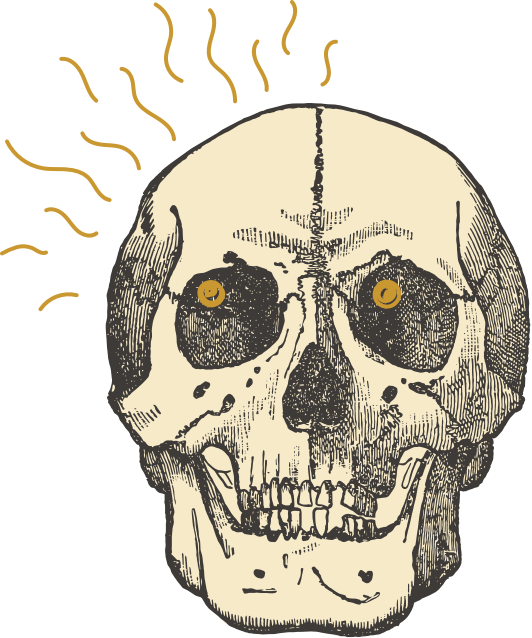Which of these do you remember?
Things change. That’s the trouble when you create scavenger hunts that uncover the odd, the unusual, the historic, the mysterious, and the hilarious things all around you in cities and museums. We write questions that send people in search of sites and sights worth the effort of finding them. But the problem is, signs come down, businesses close, statues vanish, murals get painted over, exhibits close, paintings go into storage, quirkiness gets gentrified out of existence, and at the zoo the animals, um, move on.
What’s a scavenger hunt company to do? Constant route checking and question rewriting. Sometimes we get lucky: The giant tea kettle we featured on the Freedom Trail disappeared for a long time, but returned in restored glory. Our devilish question about a Met Museum gallery donated by someone named Kevorkian went into mothballs for years while the Arabic galleries were restored, but now it’s back. Let’s take a moment here to remember some of the fallen stars of hunts past, places we’ve featured since our first hunt in 1999 that have vanished.
Dueling neighbors

Dating back at least to 2009, our midtown Manhattan scavenger hunts would take people to this spot near Sixth Avenue and ask, “Two signs in ironic juxtaposition bear bad news for your wallet. What six initials describe those two signs?” But both the National Debt Clock and the IRS office have moved on.
A flash that lost its bang
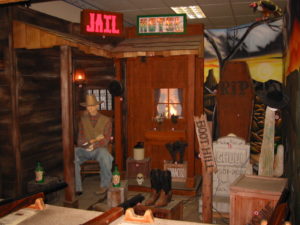
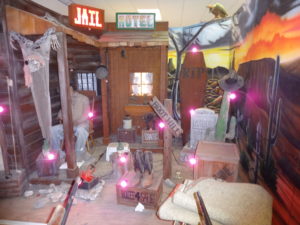
On our scavenger hunts in Santa Monica, California, we like to send teams into a classic arcade to find this shoot-out game, and challenge them to figure out which item in a list is not an active target. One quick way? Take a flash photo to reveal all the light sensors that act as targets. The game is still there, but back in the day, when we gave teams digital cameras, the flash would set off every target at once, with a cacophonous explosion of sound. But today, people use their smartphone cameras, and for some reason their flashes don’t activate the targets. Someone from one of our tech clients that do this hunt will probably explain it to us…
Bone, sweet bone
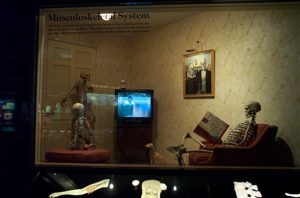
It’s not the best photo, because we took this back in the days when digital cameras (or at least ours) didn’t take great indoor photos in low light. This skeleton family relaxing at home was a highlight of our scavenger hunts at the American Museum of Natural History, since our first one there in January 1999. The question was usually: “Who might ironically want a bone?” Note bony Fido by the TV. But we also might ask about the skeletal version of American Gothic on the wall. Well done, MNH! Alas, this exhibit was replaced by the Hall of Human Origins in 2007. Museums evolve too.
Mini flamingo? Nice touch
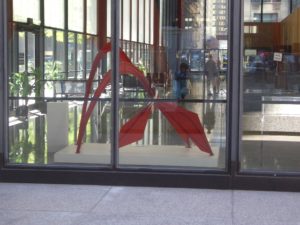
We fired up the time machine and went back to 2005 to retrieve a question from our first scavenger hunts in the Loop in downtown Chicago. You might recognize that famous Alexander Calder sculpture in the photo from, say, the parade sequence in Ferris Bueller’s Day Off. Except that the colossal original stands in Federal Plaza, where we asked teams this question:
“A blind person could help you answer this: How many tons does a giant flamingo weigh (although the blind person’s fingers might tell him it weighs much, much less)?”
The answer: 50 tons. “Inside the post office next to the giant, orange Calder sculpture called Flamingo is a miniature version that blind people can touch, along with a sign that says the large version weighs 50 tons.”
But the post office got renovated and the sculpture disappeared years ago. Unless you know where it is and can tell us. The reward for this flamingo’s capture? A ticket to our weekend hunts in The Loop for the general public. Heck, we’ll throw in two bonus points. We’re feeling generous.
